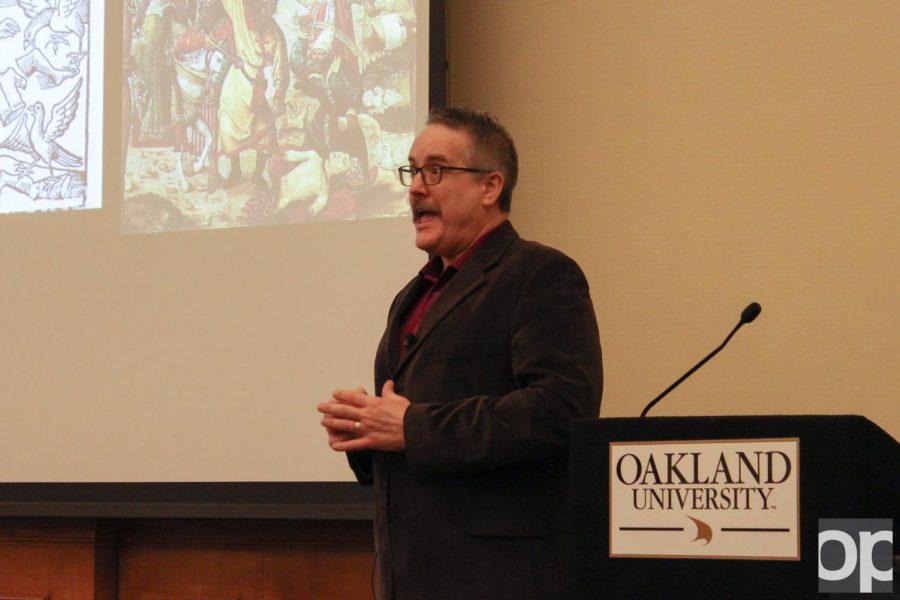The tragic narrative of Polish history
University of Michigan Professor Brian Porter-Szúcs presented in the evening on Tuesday, Feb. 6 in Banquet Room A in the Oakland Center, discussing Polish history and the idea of martyrdom.
According to Porter-Szúcs, Israel and Poland have had a tough and strained relationship even before the World Wars. Poland has recently been in hot water after its passing of the new “Holocaust Law.” The Polish-Israeli conflict is more of a free speech controversy.
The legislation states, “Anyone who publicly and contrary to the facts accuses the Polish nation or the Polish state of responsibility or co-responsibility for crimes carried out by German III Reich, or other crimes against humanity, crimes against peace, or war crimes – will be subject to a fine or imprisonment for up to three years.”
Porter-Szúcs, who has studied Polish history for over 30 years, began his argument with what exactly the Polish nation is because there is not a definition.
“There is not a single person who is to take responsibility for the crimes,” he said. “Does Hamtramck Polish count as part of the Polish nation?”
Next, Porter-Szúcs explored how history can be analyzed in a literary sense. The same genre and tropes can be applied to many events in history, and it is historians who work with these types of narratives. Martyrdom is a theme Poland has been playing at for generations.
In order to play on this sub-genre of tragedy, the narrative requires a sad ending, the main character must elicit sympathy and pity, the tragic conclusion is necessary and inevitable and the hero must be an innocent and virtuous victim, brought down by an external evil.
“This way of talking about World War II has become extremely common in national narratives especially in Eastern Europe,” Porter-Szúcs said.
There is no room for nuance and ambiguity in these types of narratives. There is no space for mixed motives, bad people who do good things or good people who do bad things. There is a requirement to have sharply drawn categories of good and evil.
“You’re going to step on someone’s narrative regardless of how you talk about World War II,” Porter-Szúcs said.
Martyrdom strips out the human nature in the narrative as they pose for the saint trope. The audience, whether it be readers or not, feels empathy for this character despite knowing the end of them is near. Since Poland is often the saint in this context, we, the audience, sympathize with Poland. The country lost 15 percent of its population during the course of World War II.
Porter-Szúcs put the statistics into a simpler concept. He showed a map of what part of the United States would look like without 15 percent of its population. That would mean all of Michigan, Ohio, Indiana, Illinois and Wisconsin would be destroyed and have no population. This population loss took place mostly during the occupations era of the war.
“We all want to believe we would be the ones to save those lives but in reality most of us would not do it because of the sacrifice it requires,” Porter-Szúcs said. “The overwhelming majority of individuals responded to the Holocaust by trying to get by and live out their lives.”






